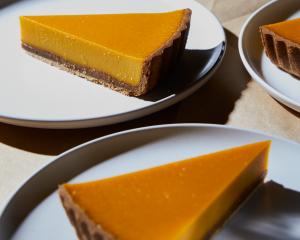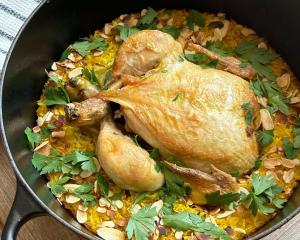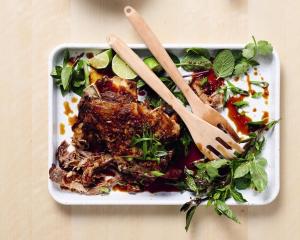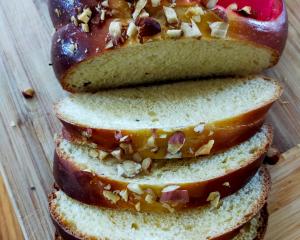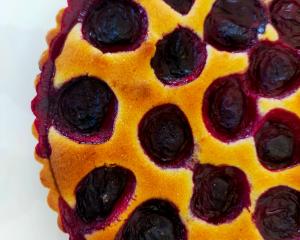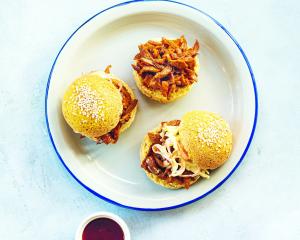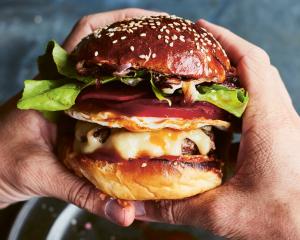Great question, although the question that comes to my mind when I think about eggs revolves around how hungry someone had to be to look at something squeezed from a bird’s backend and be the first to think ‘‘that looks like breakfast’’.
Eggs are incredibly clever things. The whites (albumen) make up about two thirds of the entire contents of an egg and are almost entirely water with just enough other bits in there to be helpful.
In fact, around 90% of the egg white is water with the remaining 10% being taken up by a smattering of vitamins, minerals and even a little glucose.
These are what allow it to hold its shape when fried and aerate when whipped.
Not to be left out, the yolk (vitellus) is crammed full of vitamins (A, D, E, & K), fats and protein.
While it can be whipped up, it does not hold as firm as the whites and the thought of an egg yolk pavlova does not really appeal to me.
They are, however, fantastic for thickening things like creme anglaise (French style custard), enriching things like cakes, cremes and sauces, and help to make excellent ice-cream.
Yolks also contain lecithin which make them invaluable as emulsifiers.
Bringing together things like oil and water is impossible without the use of emulsifiers.
Stand there with a whisk and try to combine melted butter with some lemon juice, for example, and you will get nowhere.
Do the same thing with the addition of an egg yolk, suddenly you have Hollandaise sauce and Eggs Benedict is born.
With all that said, I’m really only scratching the surface of what makes eggs so important in baking and cooking.
They are binders in some meat products, the fluff in your mousse, a setting agent in things like a lemon tart, adding richness and moisture to cakes, buns and biscuits, softening many baked goods, and even clarifying stocks and wines.
Wanting a pancake or crepe? Try frying a batter of flour and milk, not really that appealing, but add in some eggs? Pancakes and maple syrup are now possible. Eggs give eclairs their texture and space to be filled, waffles their puff and, believe it or not, have been used to make glue by ancient Egyptians and Native Americans.
So, they are clever and valuable but, how do we cook them? They can be poached, boiled, baked, fried, grilled, steamed or deep fried. They can be cooked slowly in a bowl over steaming water to make Heston Blumenthal’s scrambled eggs or flash fried to become crispy based and sunny side up.
That’s not to say cooking eggs is easy. Gordon Ramsay is known to get chefs wanting to enter his kitchen to cook scrambled eggs. If they get it right, they are in with a chance. It has always been a competition category for chefs to make a French style omelette (they are the ones that are shaped like a torpedo, still a little soft inside, and with no browning on the outside), it’s a complicated thing to get the hang of.
American-style omelette
- 3 eggs
- 1Tbsp butter
- Salt and pepper
- Splash of oil
- 2 rashers of bacon, chopped
- ½ onion, diced
- ½ capsicum, diced
- Grated cheese to personal taste
In the oil, fry together the onions and bacon until the onions are browning and the bacon is as you like it (crispy or not so)
Set these aside in a bowl or on a plate and wipe out the pan
Crack the eggs into a bowl and whisk until combined. Don’t be tempted to season at this stage as the salt will start to break down the protein in the egg which can result in them becoming both runny and tough.
Heat the pan over a medium-high heat and add the butter
When the butter is foaming, add the beaten egg and stir a little to start with. You’re trying to break up the eggs a little rather than ending up with one large lump. Smaller bits of egg held together result in a more tender dish.
After a few stirs, give the pan a shake to make sure the gaps you’ve created are filled and the mix levels out.
Top with your fillings but keep it all on one half. I like my peppers uncooked to create a fresher flavour and crunch.
When the fillings are in, the top of the eggs are almost set and before the bottom gets too brown, carefully fold the unfilled half of the omelette over the filled half using a spatula or fish slice.
Slide the omelette on to a plate and let the residual heat finish melting any cheese you’ve added.
If you feel like it, you can grate a little more cheese over the top or add a little of your favourite sauce.
Kevin Gilbert is co-owner of Gilbert’s Fine Food in Dunedin. He is a trained chef and baker who also runs cooking classes. If you have a question, email him at: kevin@gilbertsfinefood.co.nz


